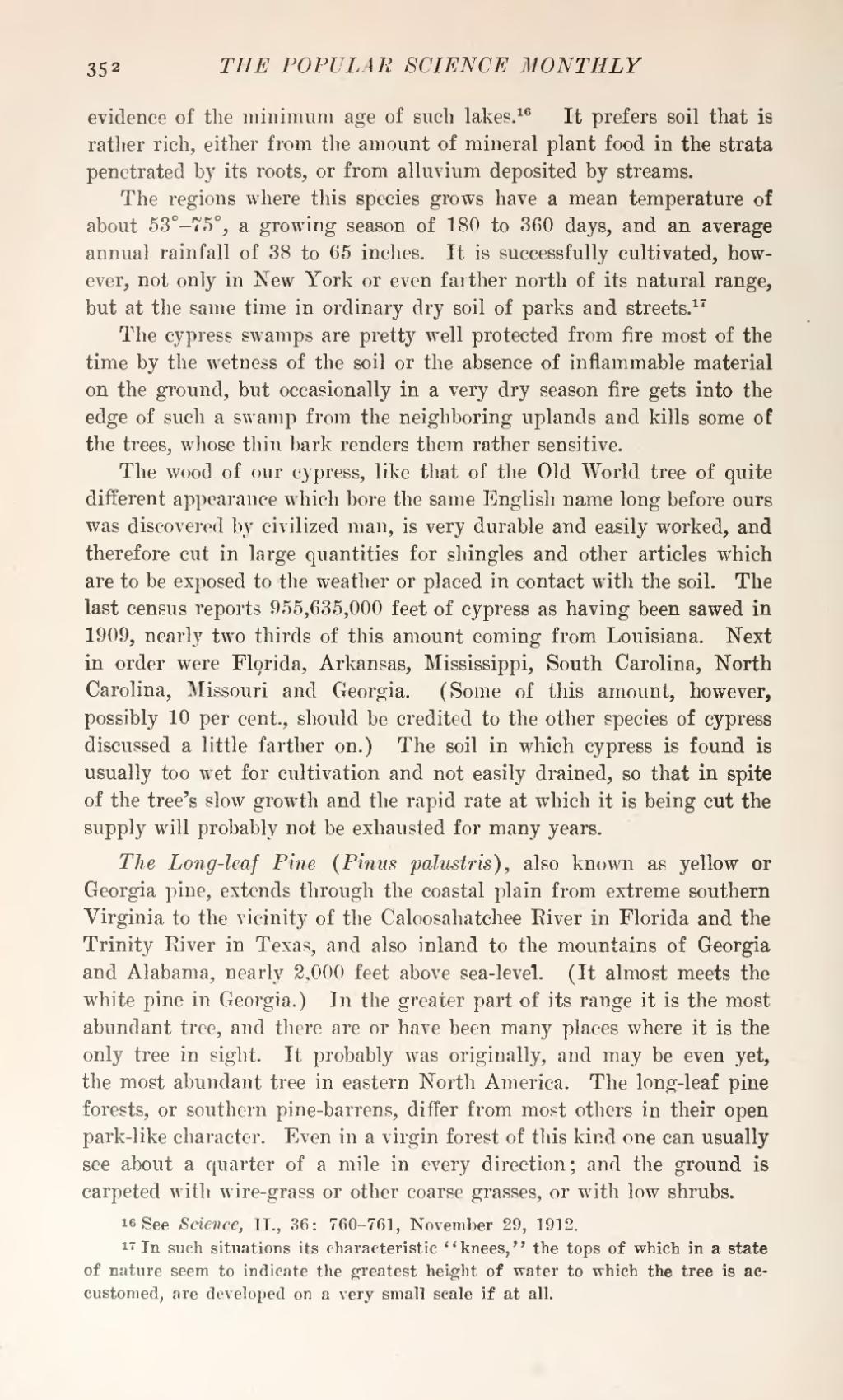evidence of the minimum age of such lakes.[1] It prefers soil that is rather rich, either from the amount of mineral plant food in the strata penetrated by its roots, or from alluvium deposited by streams.
The regions where this species grows have a mean temperature of about 53°-75°, a growing season of 180 to 360 days, and an average annual rainfall of 38 to 65 inches. It is successfully cultivated, however, not only in New York or even farther north of its natural range, but at the same time in ordinary dry soil of parks and streets.[2]
The cypress swamps are pretty well protected from fire most of the time by the wetness of the soil or the absence of inflammable material on the ground, but occasionally in a very dry season fire gets into the edge of such a swamp from the neighboring uplands and kills some of the trees, whose thin bark renders them rather sensitive.
The wood of our cypress, like that of the Old World tree of quite different appearance which bore the same English name long before ours was discovered by civilized man, is very durable and easily worked, and therefore cut in large quantities for shingles and other articles which are to be exposed to the weather or placed in contact with the soil. The last census reports 955,635,000 feet of cypress as having been sawed in 1909, nearly two thirds of this amount coming from Louisiana. Next in order were Florida, Arkansas, Mississippi, South Carolina, North Carolina, Missouri and Georgia. (Some of this amount, however, possibly 10 per cent., should be credited to the other species of cypress discussed a little farther on.) The soil in which cypress is found is usually too wet for cultivation and not easily drained, so that in spite of the tree's slow growth and the rapid rate at which it is being cut the supply will probably not be exhausted for many years.
The Long-leaf Pine (Pinus palustris), also known as yellow or Georgia pine, extends through the coastal plain from extreme southern Virginia to the vicinity of the Caloosahatchee River in Florida and the Trinity River in Texas, and also inland to the mountains of Georgia and Alabama, nearly 2,000 feet above sea-level. (It almost meets the white pine in Georgia.) In the greater part of its range it is the most abundant tree, and there are or have been many places where it is the only tree in sight. It probably was originally, and may be even yet, the most abundant tree in eastern North America. The long-leaf pine forests, or southern pine-barrens, differ from most others in their open park-like character. Even in a virgin forest of this kind one can usually see about a quarter of a mile in every direction; and the ground is carpeted with wire-grass or other coarse grasses, or with low shrubs.
